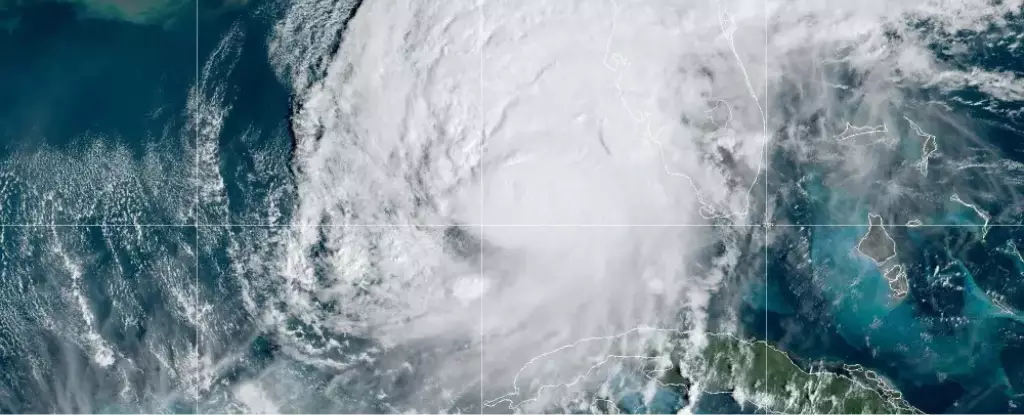The Atlantic hurricane season, known for its cyclical patterns, is once again gaining momentum after a surprisingly subdued August. The arrival of Hurricane Milton, which has escalated to a Category 4 storm, serves as a stark reminder of nature’s unpredictability, as it is projected to make landfall in Florida shortly after the state begins to recover from the damages inflicted by Hurricane Helene just weeks prior. As meteorologists analyze this shift in activity, they warn that Hurricane Milton may herald the onset of further storm developments this season.
August was marked by an unusual lull in hurricane activity, creating an atmosphere of calm that preceded the turbulent events of September. Experts from Texas A&M University, including assistant professor Kelly Núñez Ocasio, indicate that this surge in storm development is not merely coincidental but a result of underlying climatic shifts. The National Oceanic and Atmospheric Administration (NOAA) had earlier signaled the potential for a more active hurricane season, a prediction they reaffirmed as conditions in the Atlantic seemed ready to ignite. With nine storms reported so far this season, storms could easily exceed the NOAA’s forecast of up to 13 hurricanes by season’s end.
This increase in storm activity can be linked to the interplay of unique weather patterns, particularly the influences of the West African monsoon and the periodic climate phenomenon known as La Niña. During the summer months, the anticipated dynamics of these patterns were disrupted. Reports from meteorological researchers indicated that the West African monsoon experienced an unusual migration toward drier area, a movement that significantly reduced the typical moisture supply necessary for storm formation. Meanwhile, La Niña’s influence was delayed, only recently showing signs of development, leading to conditions ripe for storms.
The West African monsoon’s recent return to traditional behavior signals a transition in the seasonal climate framework that could fuel additional storms. By shifting back to its usual position, the monsoon contributes moisture essential for tropical development. Combined with the abnormally warm waters of the Gulf of Mexico, conditions are hypothesized to be increasingly conducive for the rapid intensification of hurricanes, as seen with Hurricane Milton’s rapid escalation.
Stephanie Zick, an associate professor at Virginia Tech, emphasizes that elevated sea surface temperatures serve as potent fuel for hurricanes, leading to accelerated growth rates in storm systems. Indeed, across the Gulf of Mexico, temperatures remain significantly above average, creating an environment in which storms can form and strengthen unexpectedly. This presents an ominous outlook for the weeks ahead, particularly as early forecasts predict a shift in storm activity more toward the Caribbean as the La Niña pattern consolidates.
This year’s atypical hurricane activity could reflect broader trends precipitated by climate change. With empirical studies highlighting the correlation between rising atmospheric moisture and storm formation risks, Núñez Ocasio warns of a concerning shift in hurricane cycle peaks. Their research underscores a possible delay in storm activity due to extreme moisture levels affecting the trajectory of energy that typically fuels hurricane formation. This may suggest that as climate change progresses, we could experience significant alterations in the timing and intensity of future hurricane seasons.
Moreover, understanding these evolving patterns is crucial. Matthew Rosencrans from NOAA explains that while the peak of the hurricane season varies annually, the unusual delays observed this year hint at a significant alteration in the typical schedule. As hurricane researchers continue to monitor these developments, the emphasis on preparedness remains paramount. As Núñez Ocasio poignantly remarks, the focus should always be on ensuring the protection of life and property amidst these looming threats.
As the Atlantic hurricane season unfolds, the lessons learned from the current storms remind us of the inescapable reality of climate influence on natural disasters. With uncertain patterns of activity potentially marking a new era in hurricane seasons, the importance of readiness cannot be overstated. Communities in vulnerable zones must stay alert and proactive to mitigate the potential impacts of back-to-back storms, all while taking heed of the larger implications of climate change that may reshape our understanding of hurricane seasons for years to come. In this dynamic landscape, vigilance and preparedness will be key to safeguarding lives and property against nature’s relentless fury.

Leave a Reply